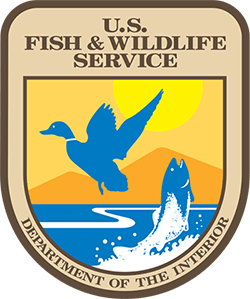Bon Secour National Wildlife Refuge 12295 Alabama 180, Gulf Shores, AL 36542
Discover the Bon Secour National Wildlife Refuge in Alabama, a sanctuary established in 1980, covering over 7,000 acres of diverse habitats such as coastal dunes, maritime forests, and freshwater swamps. This refuge is a crucial stopover for migratory birds on the Atlantic Migratory Flyway, including rare species like the piping plover and the red-cockaded woodpecker. It also protects the endangered Alabama beach mouse, which depends on its pristine dune environments. Read more below.
Tons of hiking trails: Jeff Friend Trail, Pine Beach Trail, Gator Lake Trail, Centennial Trail.
View Alabama's last remaining undisturbed coastal barrier habitat. View Endangered Species and Birds
no pets allowed
Nestled along the Gulf Coast in Alabama, the Bon Secour National Wildlife Refuge is a hidden gem that offers visitors a glimpse into some of the state’s most pristine natural habitats. Established in 1980, the refuge spans over 7,000 acres and is renowned for its rich biodiversity and commitment to conservation. The name “Bon Secour,” French for “safe harbor,” reflects the refuge’s role as a sanctuary for both wildlife and people seeking solace in nature. The refuge’s landscapes range from dynamic coastal dunes to maritime forests and freshwater swamps, providing a haven for an array of species.
One of the most compelling aspects of Bon Secour is its status as a critical stopover point for migratory birds. The refuge’s diverse habitats serve as essential breeding grounds, wintering areas, and stopover points for numerous bird species traveling along the Atlantic Migratory Flyway. Birdwatchers flock to the refuge during migration seasons to catch glimpses of rare species such as the piping plover and the red-cockaded woodpecker, both of which are federally endangered. These avian visitors rely on the refuge’s undisturbed environments, highlighting the importance of conservation efforts in maintaining these natural sanctuaries.
In addition to its avian inhabitants, Bon Secour is also home to the endangered Alabama beach mouse, a small mammal that plays a significant role in the coastal ecosystem. The beach mouse’s presence indicates a healthy dune environment, as they rely on the natural vegetation and dunes for shelter and food. Conservation efforts at the refuge focus on protecting these delicate dune habitats from erosion and human disturbance, ensuring that the beach mouse and other dune-dependent species can thrive. This small creature’s survival underscores the interconnectedness of species and the importance of preserving even the most seemingly inconspicuous inhabitants.
Another point of interest within the refuge is its scenic trails, which offer visitors an immersive experience in Alabama’s coastal beauty. The Jeff Friend Trail, for example, is a one-mile loop that winds through maritime forests and along the edges of Little Lagoon, providing ample opportunities for wildlife viewing. The Pine Beach Trail, a longer trek, takes hikers through a variety of ecosystems, from sand dunes to freshwater marshes, and culminates at the stunning, secluded beaches of the Gulf of Mexico. These trails not only offer recreational opportunities but also serve as outdoor classrooms for learning about the region’s unique flora and fauna.
The Bon Secour National Wildlife Refuge also plays a vital role in protecting the coastal barrier ecosystem. The refuge’s dunes, marshes, and maritime forests act as natural buffers against storm surges and hurricanes, mitigating the impact on inland communities. This ecological service is increasingly important in the face of climate change and rising sea levels. By preserving these natural landscapes, the refuge helps maintain the resilience of the Gulf Coast, safeguarding both wildlife and human populations. Bon Secour stands as a testament to the critical balance between conservation and human activity, offering a sanctuary where nature can thrive undisturbed.

